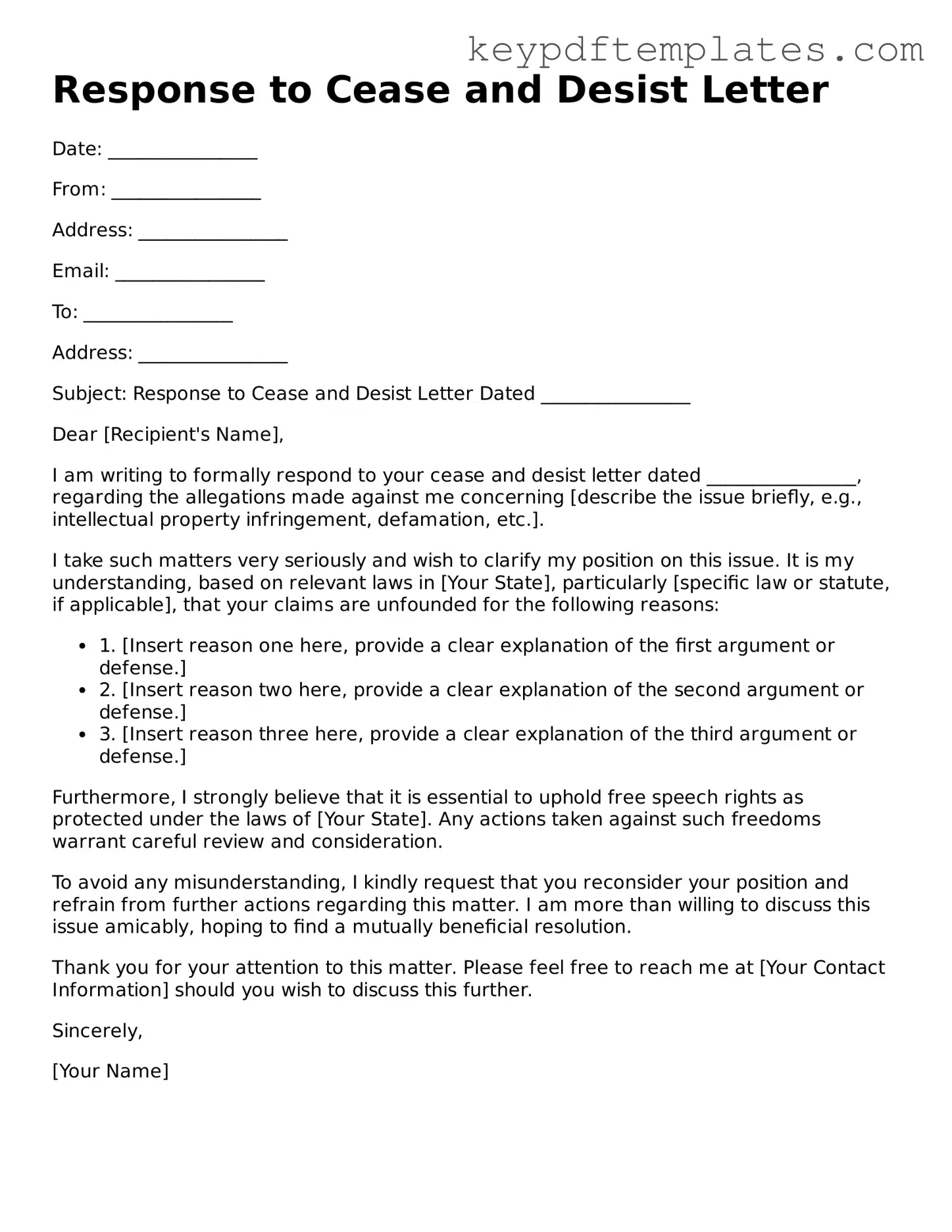Printable Response to a Cease and Desist Letter Template
A Response to a Cease and Desist Letter form is a document used to formally reply to a request demanding that an individual or organization stop certain actions that are believed to infringe on rights or violate laws. Responding appropriately to such letters is crucial, as it can help clarify misunderstandings and potentially avoid legal disputes. Understanding how to craft an effective response can safeguard your interests and maintain your reputation.
Modify Document Online
